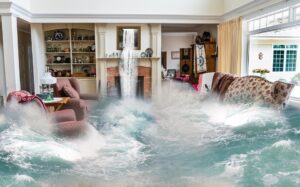Preparing a Flood Safety Kit – What to Include
 When it comes to floods, you can never be too prepared, however, there are essential tools that can help you minimize damage to your items and keep you safe. Flood safety kits are especially useful if your home is in an area that has a higher risk of flooding. If the latter is the case, then you may also need a flood plan to stay safe in the event of an emergency.
When it comes to floods, you can never be too prepared, however, there are essential tools that can help you minimize damage to your items and keep you safe. Flood safety kits are especially useful if your home is in an area that has a higher risk of flooding. If the latter is the case, then you may also need a flood plan to stay safe in the event of an emergency.
The Essential Guide to Creating a Flood Plan
When things go haywire, a flood survival kit can give you immediate access to resources in an emergency flood situation. We recommend creating two different kits – as a backup plan in case the first one is out of reach. In any case, two is better than one, especially if there is a chance that you may be unable to reach help right away.
We’ve narrowed down 10 items that you should always include in your flood emergency kit. Here are our top picks.
Seven Day Supply of Water
Water is essential for everyday life, whether it’s for nourishment or basic hygiene. The aftermath of a flood will give you access to an overabundance of water that may be unsafe to drink – if it’s even running at all. This is why we recommend having access to a seven-day supply of bottled water stored in your reserves.
If you have several family members (more than 3), we recommend having one gallon of water per person per day. Make sure to have enough water for your pets as well!
First Aid Supplies
Remember, you don’t want something to get infected – so a first aid kit with antiseptic wipes should be prioritized at your earliest. You are very likely of getting injured after a natural disaster, such as floods and tornadoes.
Some must-have items in a basic first aid kit include soap, burn ointment, bandages, pain relievers, and sterile gloves – among others. A complete first aid kit should help you clean any open wounds with antibacterial wipes. Most standard first aid kits will include the items mentioned above.
One Week Supply of Non-Perishable Food
Most guides will recommend a 3-day supply of non-perishable food, but we recommend storing supplies for at least one week. Non-perishable foods will provide you with immediate access to nourishment and don’t require special preparation or refrigeration. The best foods are canned fruits packed in juice. As a general rule, make sure to replenish your supplies every 6 months (to stay well within the expiry date).
Pro tip: Use a scheduling app to help you replenish your supplies.
Can Opener
You can’t expect to use your bare hands to open those steel cans of food. You can try, but you may end up hurting yourself and spilling the food. A more energy-effective option is to have a can opener nearby. This will help you unlock your food items effortlessly and safely.
Radio
A radio will give you access to real-time updates about current events in Northwest Michigan, especially as they relate to floods and tornadoes. During emergency situations, a radio may be your only viable source of information, especially if access to electricity is scarce. A simple battery-operated radio can give you access to weather alerts and other safety information (such as evacuation).
Important Documentation
Make sure to store copies of important documentation such as medical papers and insurance policies nearby. You can also store a digital version of these papers on a USB device. Make multiple copies of the USB device and give it to your loved ones.
Pro tip: Keep backups of all your important documents on the cloud using services such as Google Drive.
Flashlight and Lanterns
It may be risky to walk around during a flood, especially when it’s dark and you’re at risk of hitting something sharp and jaggy! A better option is to stock up on flashlights and lanterns to stay well lit even when there’s no power. As a last resort, you may also use candles to light the way – but only as a last resort since candles could pose a fire risk.
Batteries
You can’t get enough power, especially in the aftermath of a flood. All the radios and flashlights that you have stored will require power. You probably won’t have electricity at home to power these devices – a redundancy plan is needed. Make sure to keep plenty of batteries once you’re out of power – the more the merrier.
Keep a Whistle on You at all Times to Call for Help
You won’t always be able to shout “help” at the top of your lungs (it’s only going to irritate your throat). A better option instead is to keep a whistle on you. Three of anything, such as whistle blasts, flashes of light, and rifle shots, are recognized as a distress call.
Cell Phone Charger
Cell phones are the de facto means of communication with the outside world and your family. You’ll need a way to power up your cell phones if there is no electricity at home. The best way to do this is to have a solar cell phone charger to ensure your phone is all charged up, even when there is no power.
If you or someone you know has been affected by a flood, we recommend calling in professional water damage restoration specialists in Northwest Michigan at the earliest to minimize the damage done to your belongings. Call your local 911 Restoration for a quick consultation.


